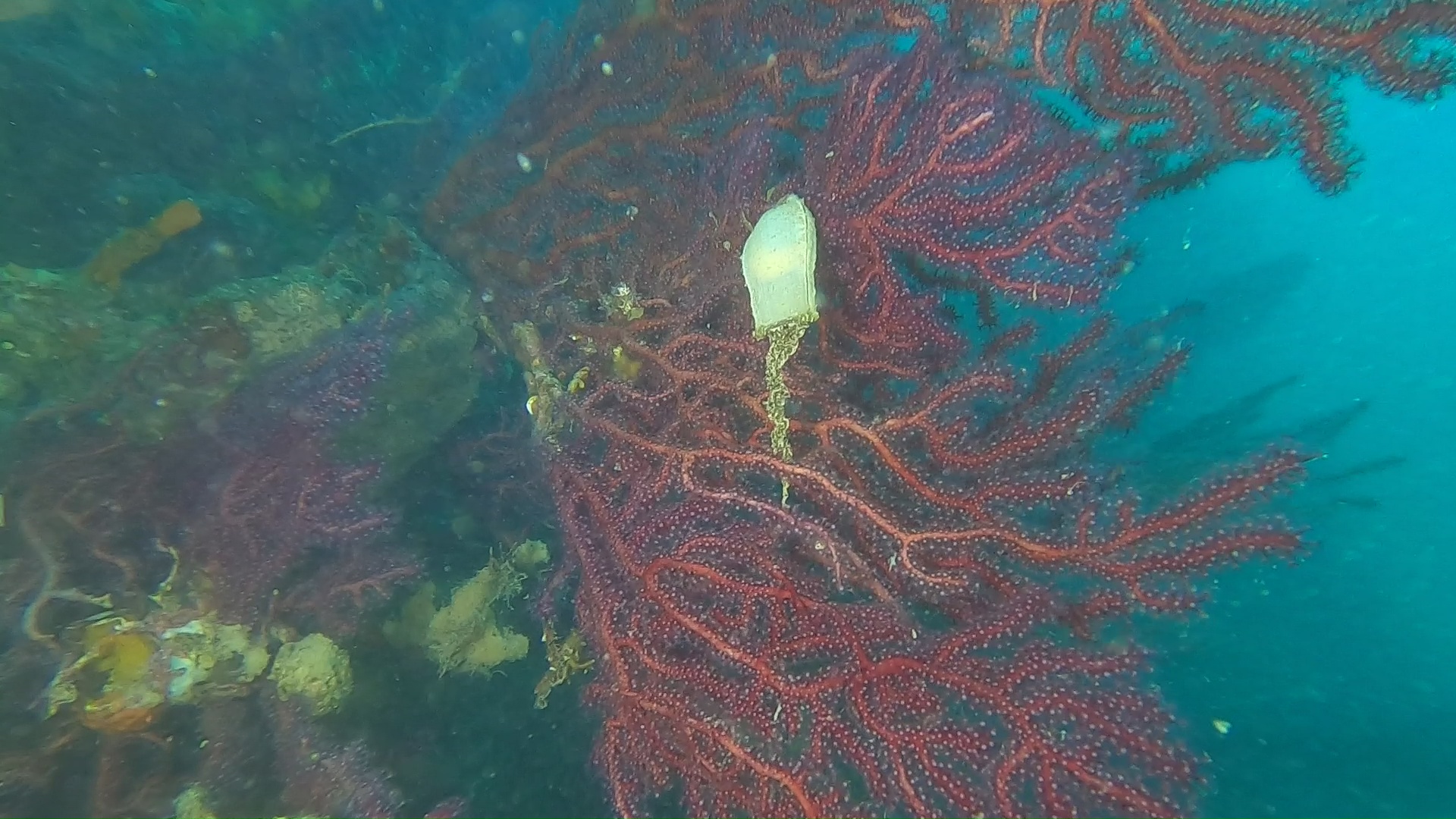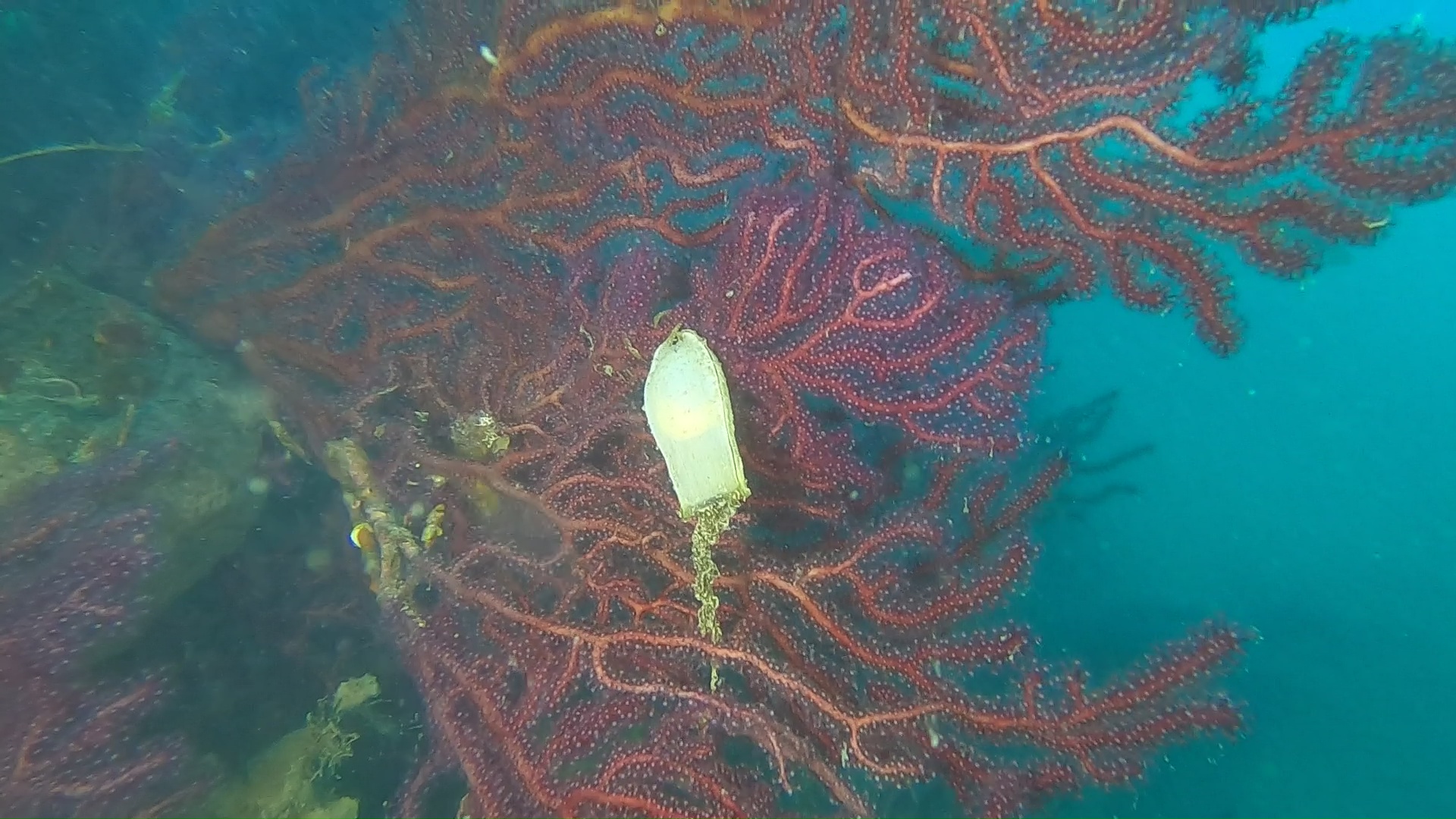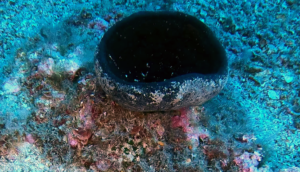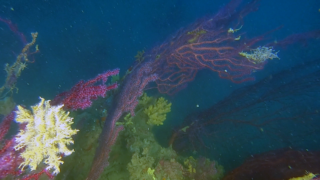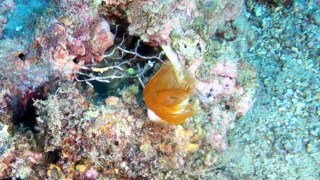During a dive in the middle of the red gorgonians (Paramuricea clavata) we came across a Catshark egg. Catshark Scyliorhinus canicula is one of the endemic shark species of the Mediterranean, and in fact lays its eggs among the branches of the gorgonians and other corals. Unlike many sharks that “give birth” to the embryo, this species allows the embryo to develop on its own, and then generate a small, completely autonomous shark.
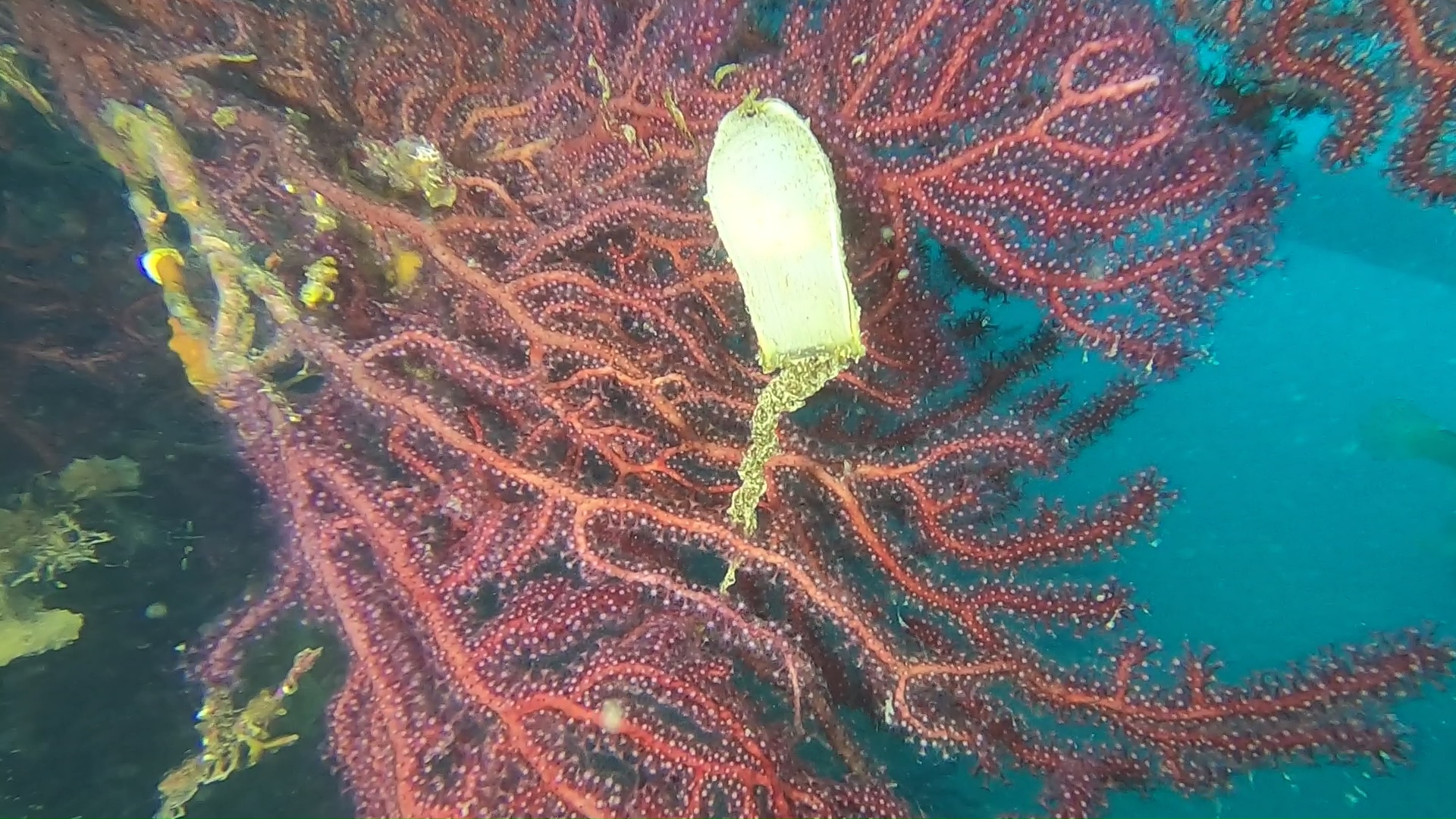
Gorgonia Rossa e Uovo di Gattuccio Scyliorhinus canicula – Red gorgonian and catshark egg – intotheblue.it
The video was made in summer in a submerged reef at a depth of 45 to 50 meters, where a beautiful colony of red gorgonian and other corals and sponges typical of the Mediterranean Sea has been thriving for several years now.
Catshark (Scyliorhinus canicula Linnaeus, 1758) is a shark belonging to the Scyliorhinidae family.
Distribution and habitat
Widespread in the Mediterranean Sea (from the Adriatic to the Strait of Gibraltar, as well as in the Aegean Sea) and along the eastern Atlantic coasts, from Guinea to the North Sea and the Baltic Sea, along the Scandinavian coasts. Its presence is also reported in the Black Sea, although a dogfish has not been caught in the Crimea since 1937.
It inhabits stony, sandy and coral bottoms, especially if rich in gorgonians (Paramuricea clavata or Eunicella cavolinii, on whose branches it lays its eggs). It frequents shallow and medium-deep waters, being found its presence from 10 to 400 meters deep.
Description
The body is elongated and slightly compressed at the sides, with a pointed head, elongated eyes and long caudal peduncle. The dorsal fins (almost equal) are set back, the first is behind the ventral, the second behind the anal; the tail is formed by two lobes, the upper one more developed than the lower one. It hardly reaches lengths greater than 100 cm. It has 5 lateral gill slits.
The livery is similar to that of S. stellaris, with a beige background dotted with brown and yellowish, but with more dense and minute spots.
Reproduction
It is an oviparous species: the female, after having been fertilized, lays some ovarian cases with a typical shape (the mermaid’s purses) among the branches of the gorgonians, where the embryo develops autonomously.
Supply
It feeds on octopuses, crustaceans, molluscs and polychaete worms, which it hunts in the seabed, but does not disdain small fish.
https://it.wikipedia.org/wiki/Scyliorhinus_canicula
 English
English Italiano
Italiano
